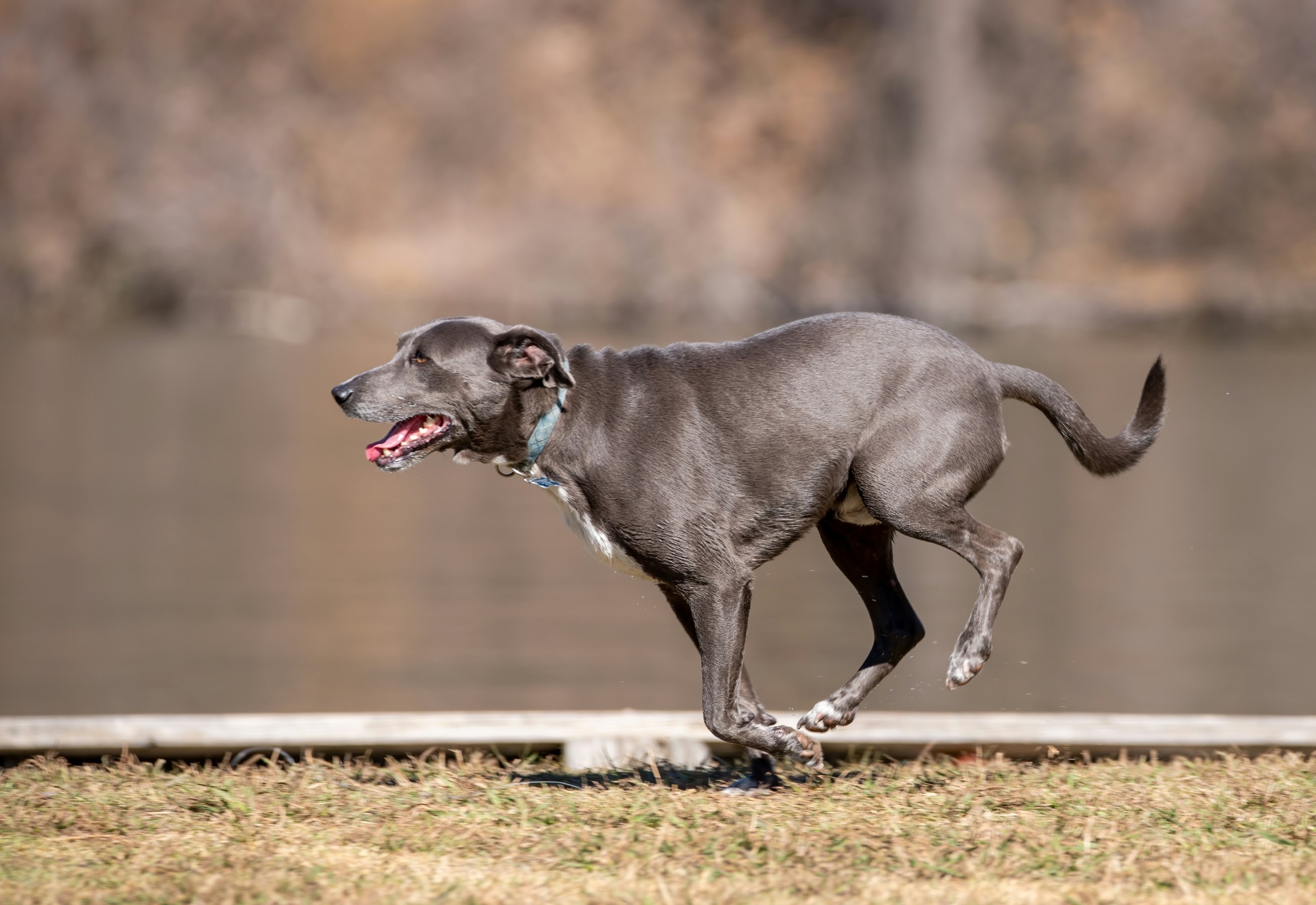Dogs are incredible athletes and companions, known for their stamina and energy. But when it comes to running a marathon, the typical 26.2-mile race, there are numerous factors to consider before training your four-legged friend to join you on such an endurance challenge. In this article, we’ll explore whether dogs can run a marathon, the breeds that are best suited for long-distance running, and how to safely train a dog to participate in such an event. Understanding a Dog’s Physical Capabilities
Physiology of Dogs
Dogs, like humans, have varying levels of endurance and athletic ability, largely determined by their breed, size, age, and health. Some breeds are naturally predisposed to excel in endurance activities. For instance, sled dogs like Alaskan Malamutes and Siberian Huskies have historically been bred for stamina. Meanwhile, hunting dogs like Labradors and Golden Retrievers have the energy reserves and muscular build conducive to prolonged physical activities.
Body Structure and Movement
The way a dog’s body is built plays a significant role in its ability to endure long-distance running. Dogs with lean, muscular builds tend to fare better in endurance activities. Their muscle composition allows for efficient energy use, which is crucial for maintaining stamina over long periods. Additionally, dogs with longer legs can cover more ground with fewer strides, similar to how taller humans tend to have longer strides that aid in marathon running.
Dogs with a naturally higher VO2 max, which measures the maximum amount of oxygen an individual can utilize during intense exercise, will usually perform better in endurance sports. Breeds that have been selectively bred for running, such as Greyhounds, exhibit these traits.
Limitations to Consider
Despite the natural athleticism of many breeds, dogs do have limitations that make marathon running particularly challenging. Unlike humans, dogs are not as efficient at regulating their body temperature. They rely primarily on panting to cool down since they have only a few sweat glands, located in their paws. During a long run, especially in warm weather, dogs are at a higher risk of overheating.
Risk of Injuries
The repetitive impact over such a long distance can be hard on a dog’s joints and muscles, particularly for larger breeds prone to hip dysplasia or other joint issues. Young dogs, whose growth plates have not yet closed, and older dogs with signs of arthritis should not be considered for marathon running due to the risk of severe injury.
It’s also important to recognize that dogs are naturally inclined to overexert themselves to please their owners. This can lead to a higher risk of injuries if the dog’s physical state is not regularly monitored.
Best Breeds for Distance Running
While most dogs are capable of following a basic running program, not all are suitable for the rigors of a marathon. Here are some breeds that are more equipped for endurance running:
Sled Dogs
- Alaskan Malamute
- Siberian Husky
These breeds are built for stamina and can maintain a steady pace over long distances, making them ideal candidates for colder climate marathons. Their thick fur also provides insulation, making them better suited for cooler temperatures.
Sporting Dogs
- Labrador Retriever
- Golden Retriever
- Vizsla
These dogs not only have the energy needed for long runs but also an eagerness to please that makes them excellent training partners. Sporting dogs have a natural inclination towards physical activities, making them easily trainable for endurance events.
Herding Dogs
- Australian Shepherd
- Border Collie
Herding dogs are known for their agility and ability to run long distances as they traditionally work moving livestock over wide areas. Their high intelligence also aids in training, allowing for smoother adaptation to structured running regimens.
Training a Dog to Run a Marathon
Health Check
Before beginning any training program, it’s crucial to have your dog thoroughly examined by a veterinarian. The vet can assess whether your dog is physically capable of the training required for a marathon and monitor their health throughout the training process. Regular check-ups during the training period can help catch any potential issues early.
Gradual Conditioning
Like human marathon training, preparing a dog for such a distance requires a gradual increase in the length and intensity of runs. Start with shorter distances and slowly build up to longer runs to help your dog build the necessary stamina and muscle strength. It’s often recommended to follow a 10% rule, where you increase the running distance by no more than 10% each week.
Hydration and Nutrition
Ensuring that your dog is well-hydrated and properly nourished is critical, especially on long runs. Carry water for both you and your dog, and consider energy-boosting treats that can be easily digested during a run. Look for treats that are high in protein and low in fillers to provide sustained energy.
Listening to Your Dog
Dogs are not always able to communicate discomfort until it has become a serious issue. Pay close attention to signs of fatigue, limping, or reluctance to move, as these can be indicators of injury or exhaustion. Monitor your dog’s recovery time after runs; prolonged fatigue could indicate overtraining.
Practical Tips for Training
Equipment
Invest in a good quality harness and leash that provide comfort and control. A harness can help distribute pressure more evenly across your dog’s body, reducing the risk of injury. Additionally, a waist leash can free up your hands, allowing for better running posture. Consider using booties to protect your dog’s paws from rough surfaces and extreme temperatures.
Weather Considerations
Avoid running during the hottest parts of the day. Early morning or late afternoon runs are usually the best times to avoid heat stress. In cold weather, ensure your dog is adequately warmed up before starting a run to prevent muscle strains. Pay attention to the ground temperature as well; hot pavement can burn a dog’s paw pads.
Rest and Recovery
Just like humans, dogs need rest days to recover from longer runs. Ensure your dog has ample time to rest and recuperate after a particularly strenuous session. Incorporate low-intensity activities like walking or swimming to promote active recovery.
Additional Considerations
Understanding Your Dog’s Limits
Each dog has its unique limits. While some dogs may thrive on long-distance runs, others might find it too taxing. It’s crucial to understand and respect these limits to prevent overexertion. Consider working with a professional dog trainer to assess your dog’s capabilities and tailor a training plan to their needs.
Building a Routine
Establishing a consistent routine can help acclimate your dog to the demands of marathon training. Consistency helps in building endurance and also trains your dog to anticipate and enjoy the running sessions. Try to run at the same time each day to establish a rhythm.
Mental Stimulation
Running should not only be a physical exercise but also provide mental stimulation. Change up your routes to keep your dog engaged and interested. Incorporate obstacles or agility training where possible to challenge their minds as well as their bodies.
Real-Life Examples
Case Study: Luna the Labrador
Luna, a five-year-old Labrador Retriever, successfully trained for a half-marathon alongside her owner. Her training regimen included three to four runs per week, starting with short one-mile runs and gradually increasing to eight miles over several months. Luna’s owner ensured she stayed hydrated and provided joint supplements recommended by their vet to support her active lifestyle. Luna’s story highlights the importance of gradual training and ongoing health monitoring.
Case Study: Max’s Mitigated Marathon
Max, a Siberian Husky, started training for a marathon but faced challenges due to the hot climate in his area. His owner adapted by incorporating swimming sessions, which provided a low-impact, cooling exercise option. Max’s training illustrates the need to adapt to environmental challenges and the importance of knowing when to modify a training plan.
Common Mistakes and How to Avoid Them
Overtraining
One of the biggest mistakes is overtraining. Dogs, much like humans, need time to adapt to increased physical demands. Overtraining can lead to injuries, so it’s essential to follow a gradual training plan and incorporate rest days. Keep a detailed training log to track progress and identify any patterns of fatigue or overexertion.
Ignoring Warning Signs
Another common mistake is ignoring the warning signs of fatigue or injury. Always be attentive to how your dog is feeling and be prepared to cut a run short if needed. Learn to recognize subtle cues such as changes in gait, lagging behind, or an unwillingness to run.
Neglecting Warm-Up and Cool-Down
Skipping warm-up and cool-down exercises can increase the risk of injury. Begin each session with a short walk to get your dog’s muscles warmed up, and end with a gentle walk to help them cool down. Stretch your dog’s legs and back post-run to prevent stiffness.
Safety and Well-being
Trail Running vs. Road Running
Consider the terrain on which you and your dog will be running. Trail running can be easier on your dog’s joints compared to hard pavement but watch out for uneven surfaces that could lead to sprains or cuts. If road running, be mindful of traffic and ensure your dog is comfortable with urban environments.
Legal and Event Considerations
Before deciding on a marathon, check if dogs are allowed in the event. Not all races permit canine companions due to safety and logistical reasons. Consider dog-friendly races or virtual marathons as alternatives.
Nutrition Adjustments
As training intensifies, your dog might require dietary adjustments. Consult with a veterinarian to ensure your dog’s diet supports their increased physical activity. You might need to introduce higher calorie foods or additional supplements for joint health.
Ultimately, while some dogs can physically handle the training and completion of a marathon, it is not suitable for every dog. It requires careful consideration of the dog’s breed, age, health, and individual temperament. For those dogs that are suitable candidates, proper training, diet, hydration, and veterinary care are paramount to ensure their safety and well-being throughout the process. The health and happiness of your dog should always be the top priority when considering such a demanding physical challenge.




